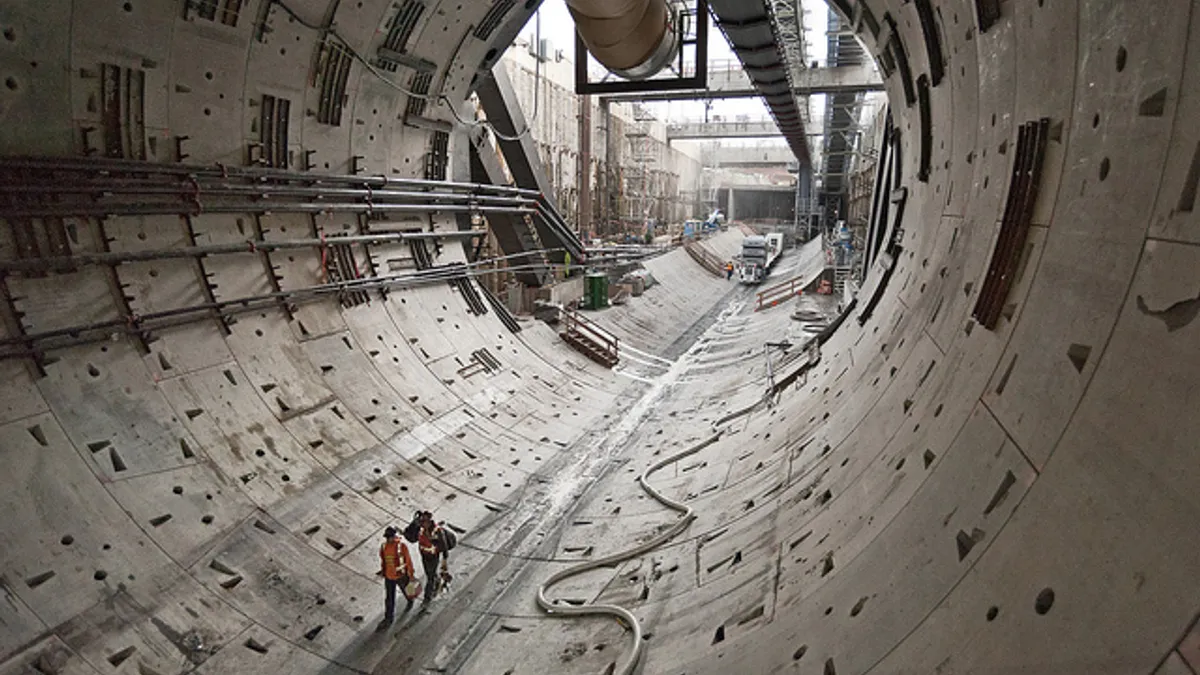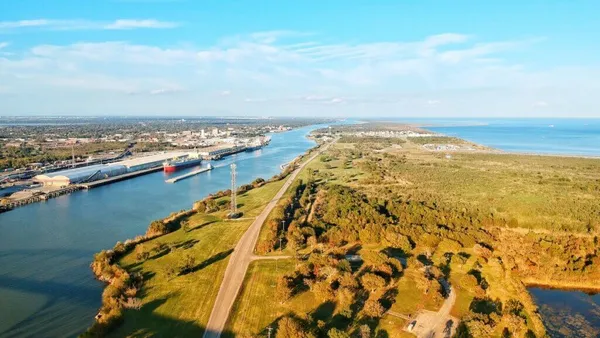Dive Brief:
- After an almost six-week suspension of work, tunneling is once again underway on the Alaskan Way Viaduct project in Seattle, The Seattle Times reported. State officials suspended digging operations last month after a sinkhole and tipped barge created doubt about the integrity and safety of the site.
- The state "conditionally lifted" the suspension for 160 feet after a committee of independent experts reviewed and approved a plan by Seattle Tunnel Partners to improve how soil is monitored as it is removed from the tunnel during digging.
- If that goes well, Bertha — the nickname for the tunnel boring machine — will be able to continue another 100 feet to a concrete-lined maintenance stop.
Dive Insight:
Washington Gov. Jay Inslee maintains that the state was correct in halting operations, but STP said the stoppage was "wrongful and unjustified" and plans to bill the state for millions of dollars in delays, according to The Seattle Times. STP said the protection built into the tunnel "worked exactly as intended" and protected the viaduct.
The relationship between STP and the state has been a contentious one ever since Bertha broke down in 2013. The boring machine was out of commission for two years and had been operational for only a brief period of time before the sinkhole and barge incidents occurred.
In October 2015, the Washington State Department of Transportation announced a lawsuit against STP for delay-related charges on the project, but STP maintains that WSDOT did not inform them about a 119-foot steel well casing in Bertha's path and said it would seek additional compensation from WSDOT.
As a result of the barge incident, STP is not permitted to remove dirt via barge but instead will use trucks. Aside from monitoring the dirt, some of the additional changes, according to KING 5 News, that STP promised to make as part of the lifted suspension are:
- Updated tunnel work and quality plans, including calculations of the amount of soil removed during excavation of each tunnel ring
- Realignment of key personnel within their quality assurance program
- New quality assurance protocols
- New personnel at key positions within the tunneling operation
- Restructured daily tunneling meetings that include additional participants and protocols













